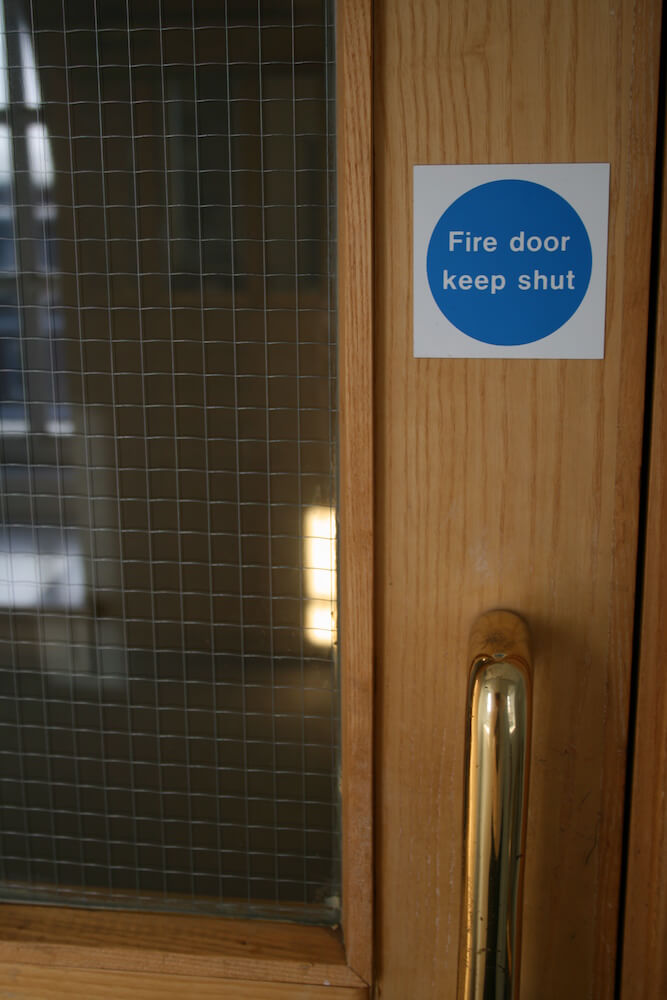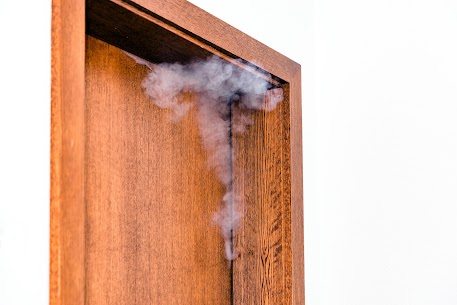We will be closed from 23rd December 2025 and will be back open on Monday, 5th January 2026!
Merry Christmas and Happy New Year!
Fire Doors Complete provides businesses and individuals with the skills and knowledge required to comply with UK fire safety legislation. We know that fire doors play a vital role in protecting people and property in the event of a fire. However, despite their importance, fire doors are often wedged open, putting occupants at serious risk. In this blog post, we will examine the hazards of leaving fire doors open and emphasize the need to keep them closed.
Fire doors are safety devices designed to contain fires and prevent the spread of smoke. They are a legal requirement in commercial buildings and blocks of flats. When closed, fire doors form a barrier that can hold back fire and toxic fumes, buying time for building occupants to evacuate.
Modern fire doors are constructed to an exacting standard, with fire-resistant cores, intumescent seals that expand in heat, and strong hinges and closing mechanisms. Certified fire doors can withstand flames for 30 minutes or more when properly installed and maintained. This gives the fire brigade crucial time to arrive on the scene and conduct rescue operations.

While fire doors play an indispensable role, they only work when closed. A fire door wedged or propped open completely defeats its function as a fire safety device. An open door allows smoke and flames to travel freely, accelerating the spread of fire.
There are several major risks associated with leaving fire doors open:
There are a few common reasons why fire doors often get propped open:
While these may seem like harmless actions, they can have catastrophic consequences. Something as simple as a door wedge can endanger many lives in an emergency.
There are legal obligations regarding fire doors that building owners and employers must adhere to. The key pieces of legislation are:
The FSO states that fire doors must be kept closed unless fitted with approved automatic closing devices. Building owners have to ensure fire doors are never obstructed or wedged open. Doing so can result in prosecution and fines.
It is also imperative that fire doors receive routine inspection and testing. They should close firmly, have functioning seals, and be certified to the appropriate fire rating standard. Neglecting fire door maintenance violates the law.
Creating a strong fire safety culture is essential for any organization. Leadership must stress that wedging doors undermines fire protection and endangers colleagues. Some helpful strategies include:
With engagement and commitment from management and employees, organizations can foster an environment where fire door safety is second nature.

We all have a part to play in fire safety. Be vigilant and take action if you see a wedged open fire door by closing it firmly. One small act can save lives.
Pause and consider the implications before propping open a fire door. Never assume it will be OK. Reflect on the risks of overriding such a vital safety mechanism.
Together we can take responsibility for fire door safety. Closing an open fire door takes just a moment but provides protection that lasts. Make it a habit to keep fire doors shut. It is an easy yet meaningful contribution towards safeguarding your colleagues, loved ones and property.
At Fire Doors Complete, we are passionate about fire safety. Contact our experts today to learn more about fire doors or schedule an inspection. We offer fire door installations, repairs, upgrades and maintenance to help keep your building compliant and protected.